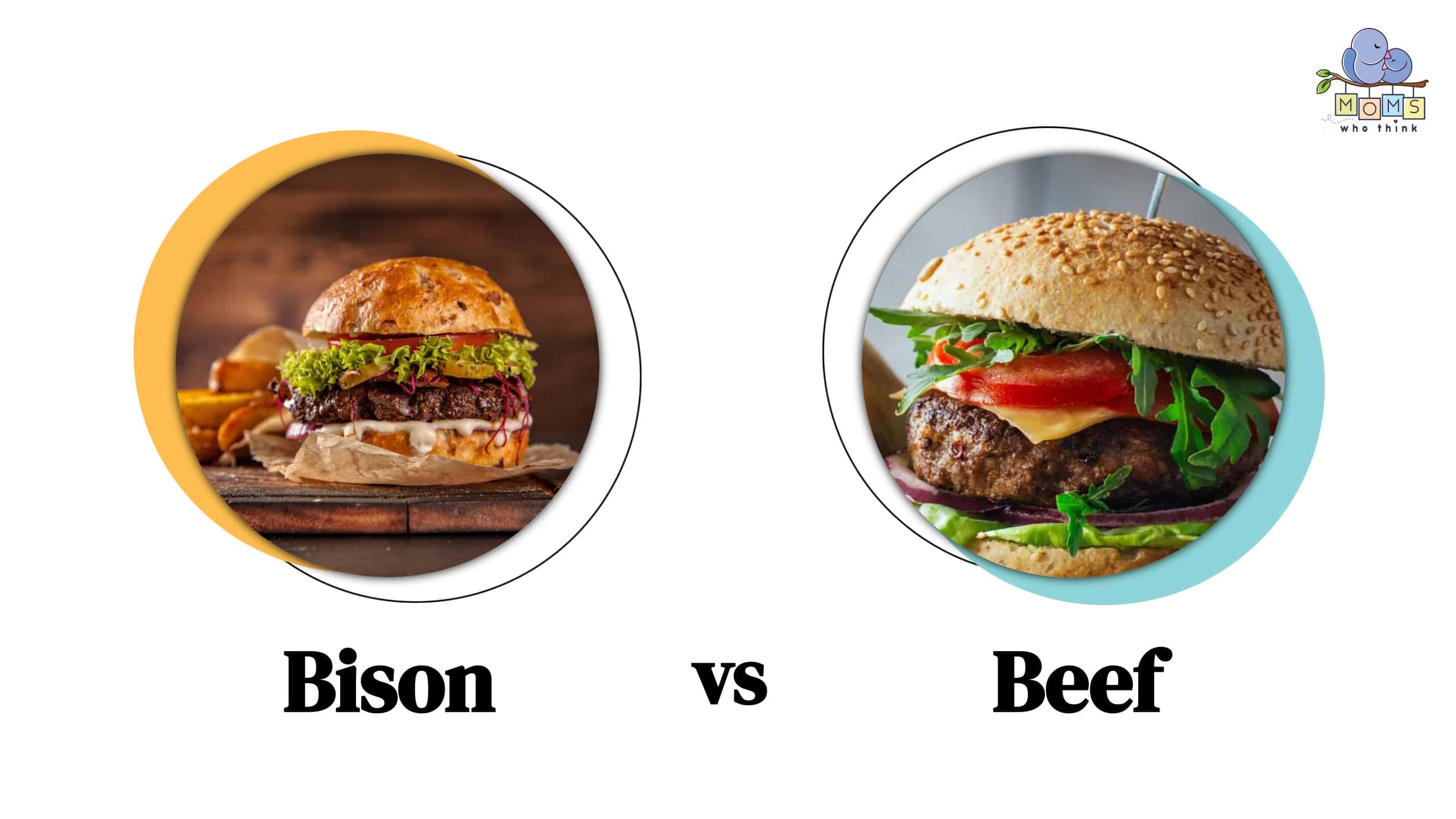The next time you order a burger at a restaurant, you may be surprised to know it comes from a buffalo instead of a cow. It’s true! Bison burgers are very popular in restaurants across America. Why the craze? Simply put, bison is versatile and is richer, leaner, and tastier than beef. And because bison tends to have less fat than beef, it is often referred to by some as the “healthier” red meat. While both bison and beef have similar nutrition profiles, there are significant differences between bison vs. beef. This article will explore the differences you need to know to make an informed choice for you and your family.
Bison vs. Beef: Farming Method
Bison Farming Method
Of course, the meat comes from bison, also known as buffalo or American buffalo. One of the main differences between bison and beef is how they are farmed. For example, bison is more likely to be grass-fed or even hay-fed. And since they are considered wild animals that are large and strong, it can be difficult for ranchers to raise them on a farm. Especially because bison don’t like to be couped up in close quarters – it makes them nervous and easily excitable.
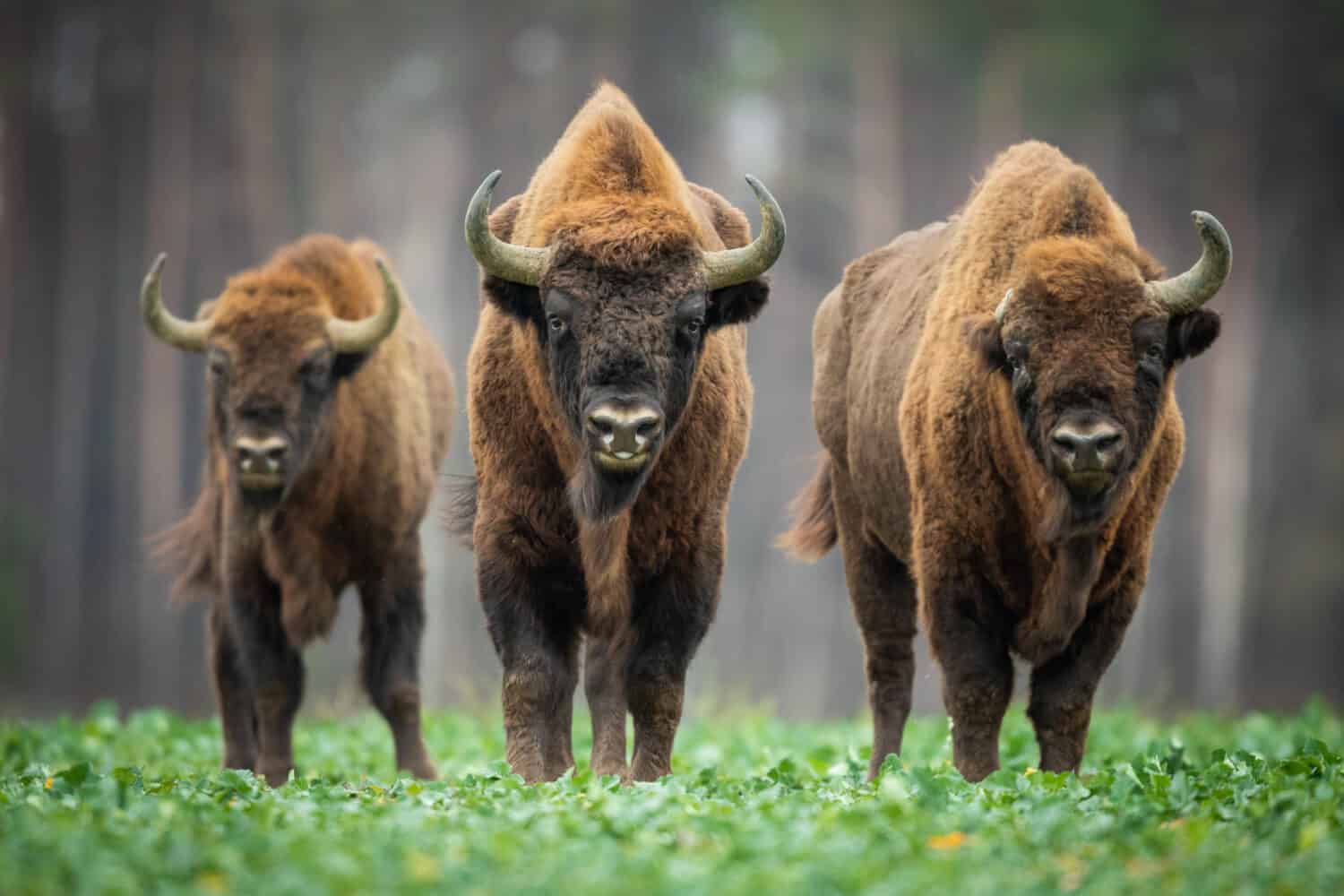
Bison are wild animals that freely roam the open fields!
©Szczepan Klejbuk/Shutterstock.com
They also require special fencing and handling facilities to farm them. This explains why bison roam freely in their natural habitat and live off the open land. Plus, this gives them a higher nutrition profile than beef as you will discover below.
Beef Farming Method
Conversely, the USDA requires cattle beef to be inspected for wholesomeness and safety, but bison are not.
There are different types of farming methods for beef. One more traditional, conventional type involves raising cattle in large indoor and outdoor areas. This is known as Concentrated Animal Feeding Operations (CAFOs) or feedlots. Here, the cattle are rapidly fattened on grain-rich diets. However, grain-fed makes the beef less healthy. Why?
Because grain-fed beef contains more fat in the meat. But here’s something else you need to know. The feedlots are densely populated, which makes this kind of overcrowding lead to significant health problems for the cattle. That’s why they are given growth hormones and antibiotics to prevent disease within densely populated and frequently unsanitary environments.
Pasture-raised beef
This means that cows spend their whole lives in open fields instead of being kept in crowded feeding areas like CAFOs. These cows mostly eat fresh grass and plants from the pasture, and some farmers might also feed them a grain-fed diet as well. This usually happens during the cold winter months when cows can’t freely eat the grass and plants.
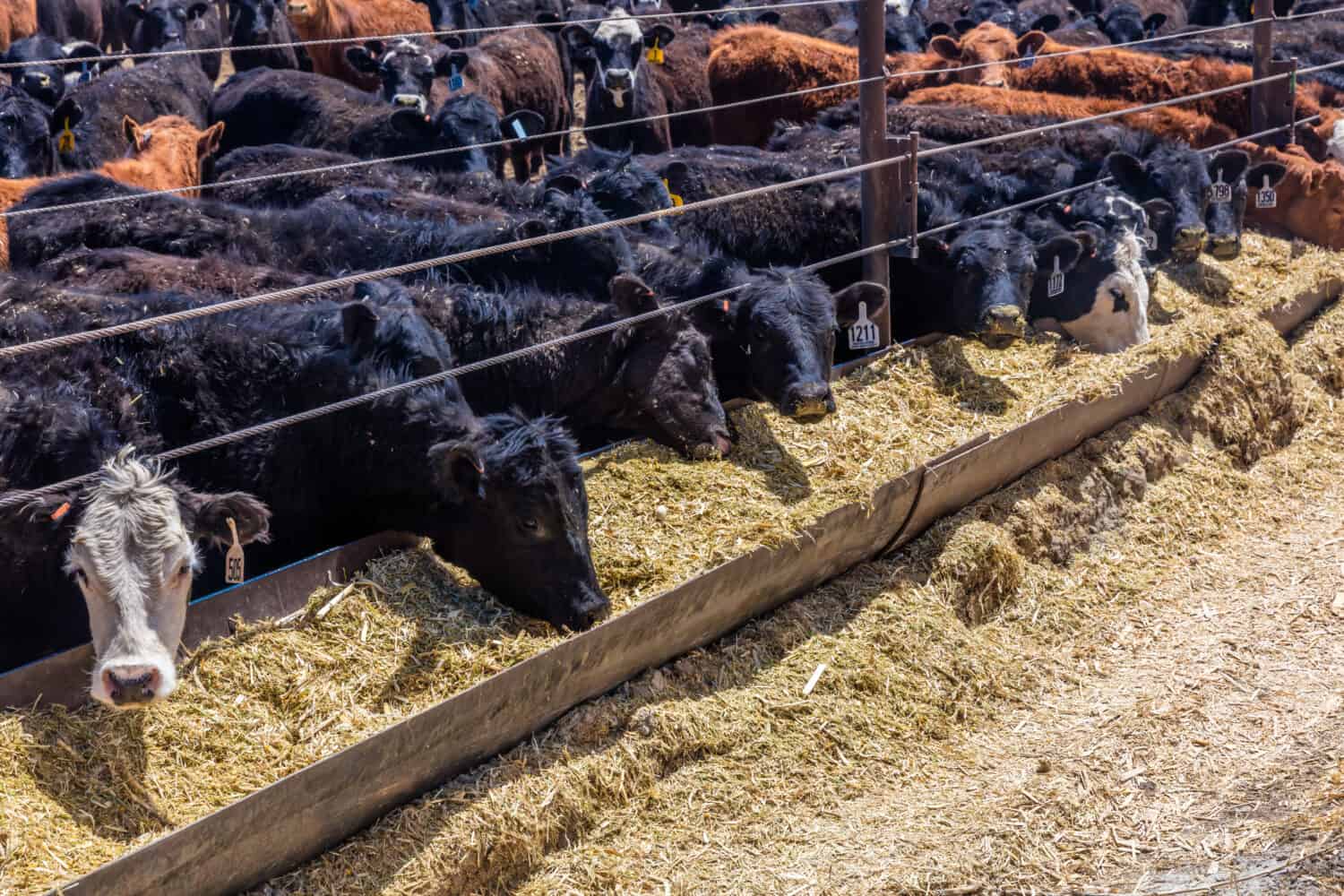
Cattle in a feedlot
©Joseph Sohm/Shutterstock.com
Grass-fed beef
This is where things can get tricky. Naturally, when you see the words “grass-fed” beef, it should mean that it comes from cattle that spend their entire lives eating nothing but grass and forage. However, the USDA’s standard for “grass-fed” beef is that the cattle must be 50% grass-fed. That means the other 50% can consist of cattle with a grain-fed diet. So cattle aren’t required to have a 100% grass-fed diet in order to have the label “grass-fed.”
Bison vs. Beef: Taste and Texture
Bison
Even though bison is considered a game meat, it doesn’t have a “gamey” flavor. The texture is soft. In fact, some people describe its texture as incredibly tender – no matter how you prepare it. Also, bison has a hint of sweetness and doesn’t leave you with an aftertaste.
Beef
From juicy to succulent, that’s how beef ranges in taste. The credit for the umami flavors is often due to the presence of fat and marbling. Sometimes it has a rich and buttery taste. Other times, it has a somewhat bitter and even more earthy flavor.
The texture can vary from firm, cohesive to juicy. The way you cook the beef has a significant impact on how the texture will be.
Bison vs. Beef: Cooking methods
Both bison and beef can be grilled, roasted, pan-seared, braised, stewed, stir-fried, smoked, and ground meat. When it comes to roasts, steaks, and burgers, here are some very common ways they are prepared:
Rare
This is cooked bison or beef seared quickly on the outside but left mostly raw on the inside. The center is cool to the touch and has a deep red or even purple color. It's very tender and juicy, with minimal cooking time, which preserves its natural juices and flavors. Some may describe it as soft and almost buttery in texture. Bison steaks are best when cooked, rare when it reaches the internal temperature of 120°F. On the other hand, beef is 120°F to 125°F.
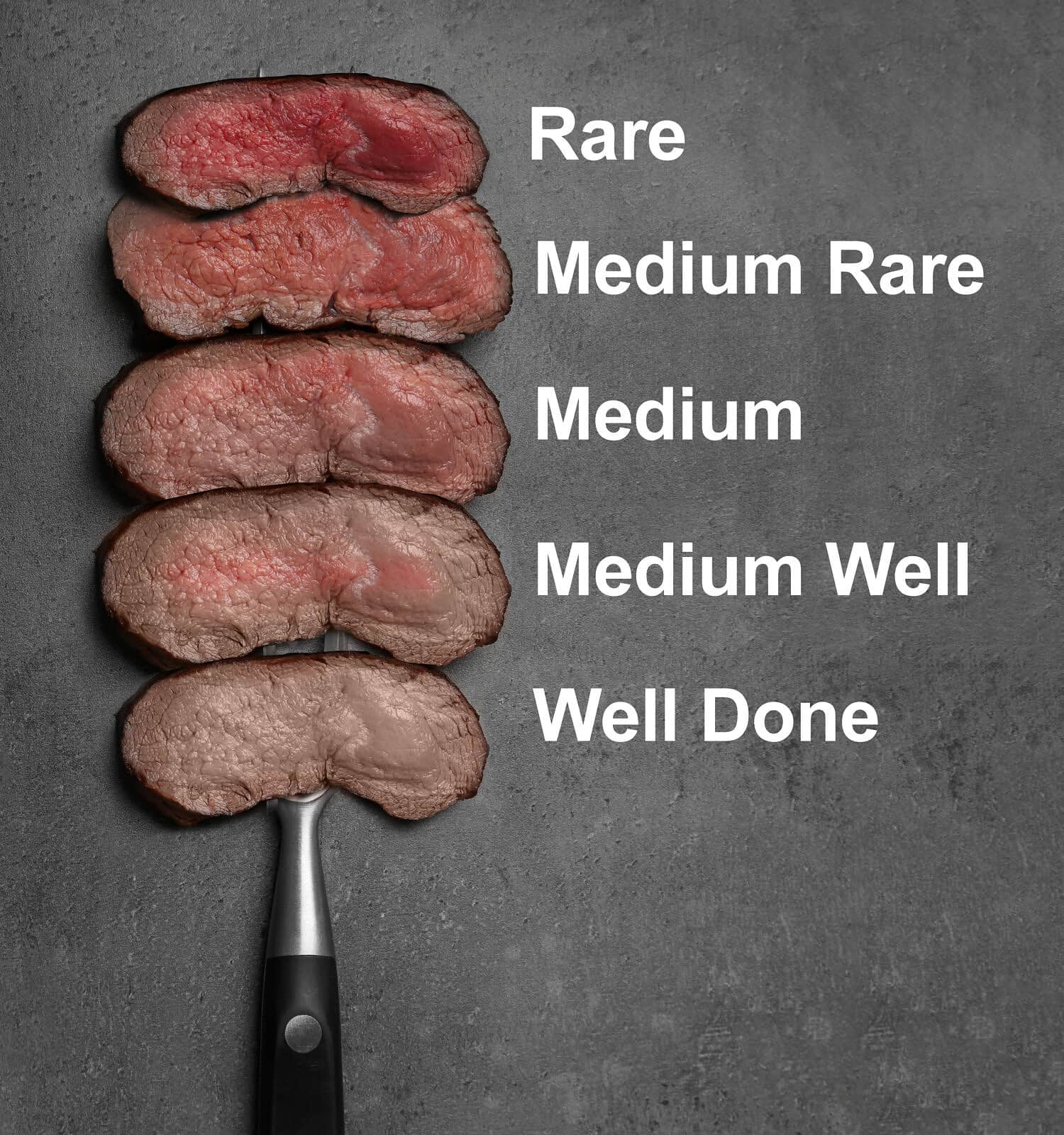
Bison and Beef can be enjoyable a various cooking temperatures.
©New Africa/Shutterstock.com
Medium Rare to Medium Well
The bison or beef is cooked slightly longer than rare but maintains a reddish-pink center. Bison steaks are best when cooked medium-rare to reach the internal temperature of 135°F. And beef is usually recommended to cook until at least 130°F to 145°F. It's warm in the middle and has a good balance of tenderness and juiciness. This level of doneness allows for a bit of caramelization on the outer layer while retaining the meat's natural flavors and juiciness.
Well-Done
This method is mainly used for beef and is cooked thoroughly, with no pink or redness left in the center. It's uniformly brown throughout and has a firm texture. Well-done beef is cooked at a higher temperature for a longer time, resulting in a drier and less juicy texture compared to rare or medium rare. It tends to have a more intense flavor but may lose some of the meat's natural juiciness and tenderness.
Why You Should NOT Cook Bison Well-Done
Beef can be cooked from rare, medium-rare to well-done. However, bison is lower in fat than beef, so it can be easily overcooked, which means it does not do well as a well-done meat. The fat acts as an insulator, which makes bison more susceptible to losing its moisture and flavor faster if you were to fully cook it.
Bison vs. Beef: Types of food
Sometimes, it can be hard to tell the difference between bison vs. beef in some dishes. Both bison and beef are enjoyed as steaks, burgers, meatballs, meatloaf, tacos, casseroles and so much more! Make sure you check out some tasty recipes below!
Bison vs. Beef: Health Concerns
Whether bison or beef, whatever the animal was fed can significantly impact the nutrition level, flavor, texture, and taste of the meat. Let’s look at an example of beef. A cattle’s grain-fed diet consists of grains from soy and corn and other additives. According to the North Dakota State University, this unnatural diet has been known to create potential digestive problems. This can, in turn, cause cattle to become sick and spread disease in their concentrated environment.
On the other hand, according to WebMD, grass-fed beef has up to six times more heart-healthy omega-3 fatty acids than regular grain-fed beef.
Also, grass-fed beef tends to have less fat than beef from feedlots. Why? Because it doesn't have as much marbling or tiny streaks of fat within the meat, which means it has lower fat content and fewer calories per serving. However, bison has almost no marbling, which means it has much lower fat content and fewer calories when compared to any beef, including grass-fed!
Bison vs. Beef: Nutritional Value
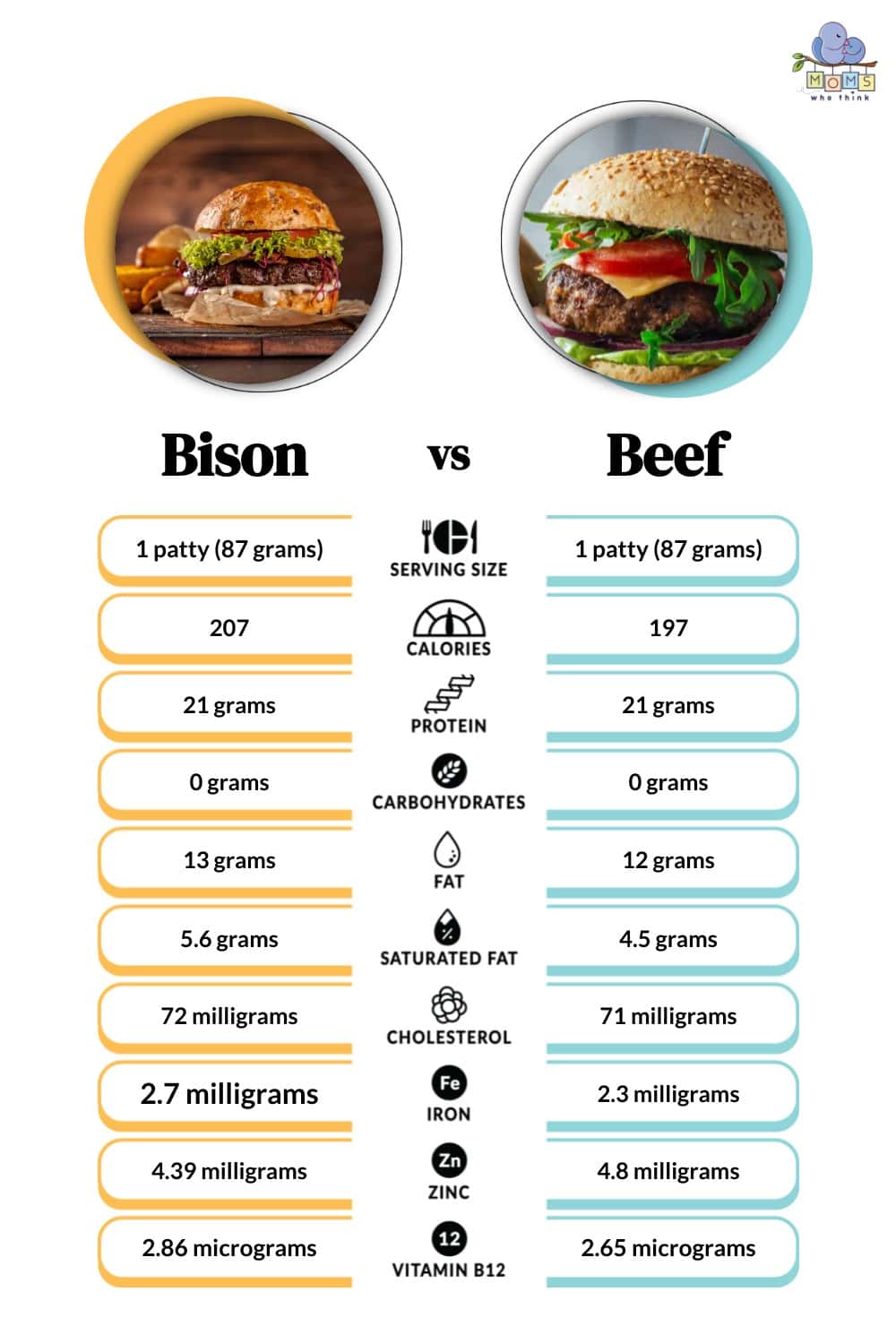
Final Thoughts:
Bison and beef are different in several ways. For example, bison meat is leaner, meaning it has less fat and fewer calories. Also, bison roam on open grasslands and are often fed naturally. This makes bison a more eco-friendly choice and is growing in popularity across many restaurants and households. Beef, on the other hand, is more common but tends to be fattier. Both bison and beef offer a wide variety of recipes to satisfy any meat lover! So, if you want a leaner and environmentally friendly option, bison might be the way to go.
Best Recipes
Feel free to use these recipes interchangeably with bison or beef!
Creamy Slow Cooked Garlic Beef Stroganoff
Beef and Beer Sliders with Waffle Fries
